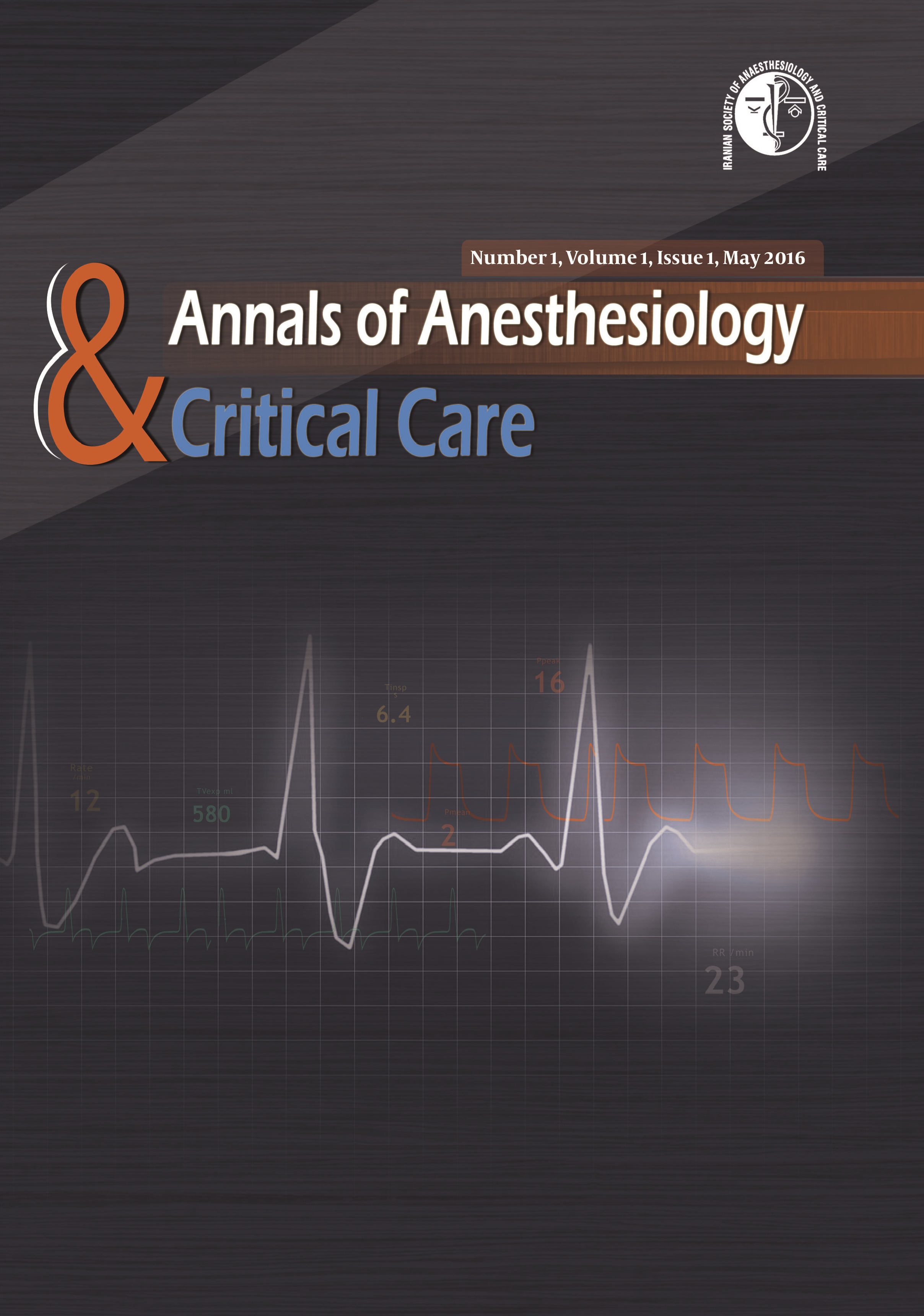Effect of Equal Ringer’s Lactate and Normal Saline Solution Infusion Versus Normal Saline on Acid-Base Balance and Serum Electrolytes After Living-Related Renal Transplantation: A Randomized Controlled Trial
Annals of Anesthesiology and Critical Care,
Vol. 4 No. 1 (2019),
1 April 2019
,
Page 1-6
Abstract
Background: Hyperkalemia is a common complication of renal transplantation (RT). Normal saline (NS) remains the most commonly used infusion solution during RT to avoid hyperkalemia, but it is associated with hyperchloremic metabolic acidosis.
Objectives: We aimed to study the metabolic profile and renal function in RT patients managed with equal NS and ringer’s lactate (RL) solution versus NS alone.
Methods: In this randomized controlled trial, 46 adult patients (17 females and 29 males) undergoing living-related RT were recruited and divided into the two groups according to the IV fluid infusion: NS and RL-NS. Subsequently, patients were evaluated based on arterial blood gas (ABG) test, sodium (Na), potassium (K), blood urea nitrogen (BUN), and creatinine (Cr) before and after RT and 3 and 7-day BUN and Cr.
Results: The mean age of the patients was 44.52_12.58 years in NS and 45.43_14.29 years in NS-RL group. There were no significant differences in the demographic and baseline patients’ characteristics between the two groups. BUN and Cr were lower in the NS group up to 7 days after RT (all P < 0.05). Serum Na was lower in the NS-RL group and serum K was higher in this group significantly (P = 0.004 and 0.028, respectively). No significant difference was observed regarding acid-base balance and other ABG measures. No case of hyperkalemia or acidosis was observed after RT.
Conclusions: Our study showed that neither NS nor NS-RL solutions were associated with the risk of hyperkalemia or acidosis after RT; however, renal function was superior in patients receiving the NS infusion.
- Renal Transplantation, Crystalloids, Normal Saline, Ringer’s Lactate, Acidosis, Hyperkalemia, Living Donor
How to Cite
- Abstract Viewed: 115 times
- pdf Downloaded: 47 times
